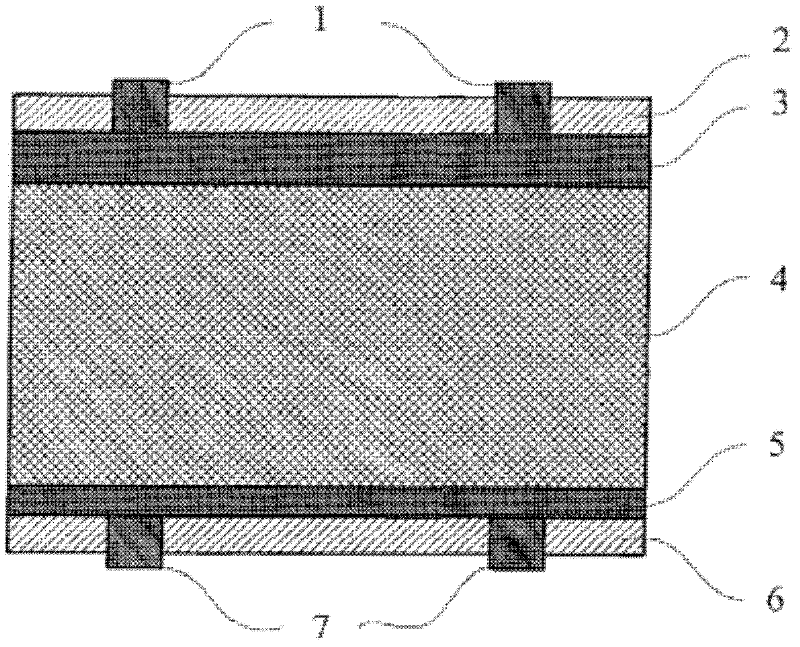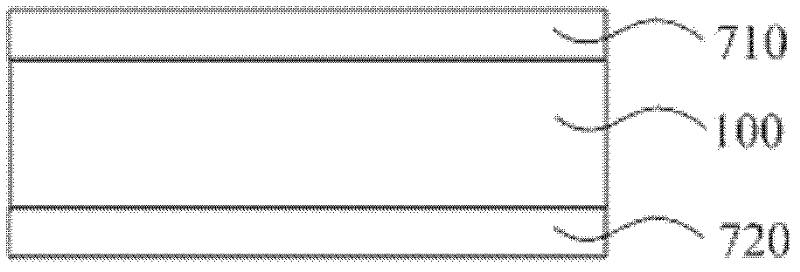Thin film solar battery and manufacturing method thereof
A technology of solar cells and manufacturing methods, which is applied to circuits, photovoltaic power generation, electrical components, etc., can solve the problems of reducing the bandgap width of thin-film solar cells, reducing the photoelectric conversion efficiency of thin-film solar cells, and polluting single-crystal silicon substrates, etc., to achieve Improve photoelectric conversion efficiency, reduce pollution, and increase the effect of bandgap width
- Summary
- Abstract
- Description
- Claims
- Application Information
AI Technical Summary
Problems solved by technology
Method used
Image
Examples
Embodiment 1
[0068] refer to figure 2 As shown, the present embodiment provides a method for manufacturing a thin-film solar cell, including:
[0069] Step S11, providing a substrate;
[0070] Step S12, sequentially forming a first I-type semiconductor layer, a P-type semiconductor layer, and a first electrode on one side of the substrate; the concentration of dopant ions in the P-type semiconductor layer ranges from close to the first I-type semiconductor layer to The direction away from the first I-type semiconductor layer increases sequentially;
[0071] Step S13, forming a second I-type semiconductor layer, an N-type semiconductor layer and a second electrode in sequence on the other side of the substrate; the concentration of dopant ions in the N-type semiconductor layer is from close to the second I-type semiconductor layer The direction away from the second I-type semiconductor layer increases sequentially.
[0072] In this embodiment, the pollution of the P-type semiconductor l...
Embodiment 2
[0124] This embodiment provides a method for manufacturing a thin-film solar cell, including:
[0125] Provide the substrate;
[0126] An I-type semiconductor layer and a P-type semiconductor layer are sequentially formed on the substrate, and the concentration of dopant ions in the P-type semiconductor layer increases sequentially from a direction close to the I-type semiconductor layer to a direction away from the I-type semiconductor layer.
[0127] Wherein, the substrate may be an N-type substrate.
[0128] The steps of forming the I-type semiconductor layer and the P-type semiconductor layer are the same as the steps of forming the first I-type semiconductor layer and the P-type semiconductor layer in Embodiment 1, and will not be repeated here.
[0129] After the P-type semiconductor layer is formed, an anti-reflection layer and a front electrode can be sequentially formed on the P-type semiconductor layer, and a back electrode can be formed on the lower surface of the ...
Embodiment 3
[0138] This embodiment provides a method for manufacturing a thin-film solar cell. The difference between it and Embodiment 2 is that in this embodiment, an N-type semiconductor layer is formed on the P-type semiconductor layer after the P-type semiconductor layer is formed.
[0139] Wherein, the concentration of dopant ions in the N-type semiconductor layer may be distributed uniformly or unevenly, which does not limit the protection scope of the present invention.
[0140] Specifically, refer to Figure 13 As shown, the thin-film solar film cell made by the method of this embodiment includes:
[0141] Substrate 30;
[0142] I-type semiconductor layer 31, P-type semiconductor layer 32, N-type semiconductor layer 33, anti-reflection layer 34 and front electrode 35 located on the upper surface of the substrate 30 in sequence;
[0143] The back electrode 36 located on the lower surface of the substrate 20 .
[0144] Wherein, the substrate 30 may be an N-type substrate or a P-...
PUM
 Login to View More
Login to View More Abstract
Description
Claims
Application Information
 Login to View More
Login to View More - R&D
- Intellectual Property
- Life Sciences
- Materials
- Tech Scout
- Unparalleled Data Quality
- Higher Quality Content
- 60% Fewer Hallucinations
Browse by: Latest US Patents, China's latest patents, Technical Efficacy Thesaurus, Application Domain, Technology Topic, Popular Technical Reports.
© 2025 PatSnap. All rights reserved.Legal|Privacy policy|Modern Slavery Act Transparency Statement|Sitemap|About US| Contact US: help@patsnap.com



